Once a place where ancient potters lived and made vases, and also the site of Greece’s largest cemetery, the ancient cemetery of Kerameikos boasts centuries of history that most tourists to Athens don’t know they should explore. We love visiting Kerameikos for a relaxed morning– there’s shade all year round and it is home to some of Athens’ best off-the-beaten-path archaeological treasures.
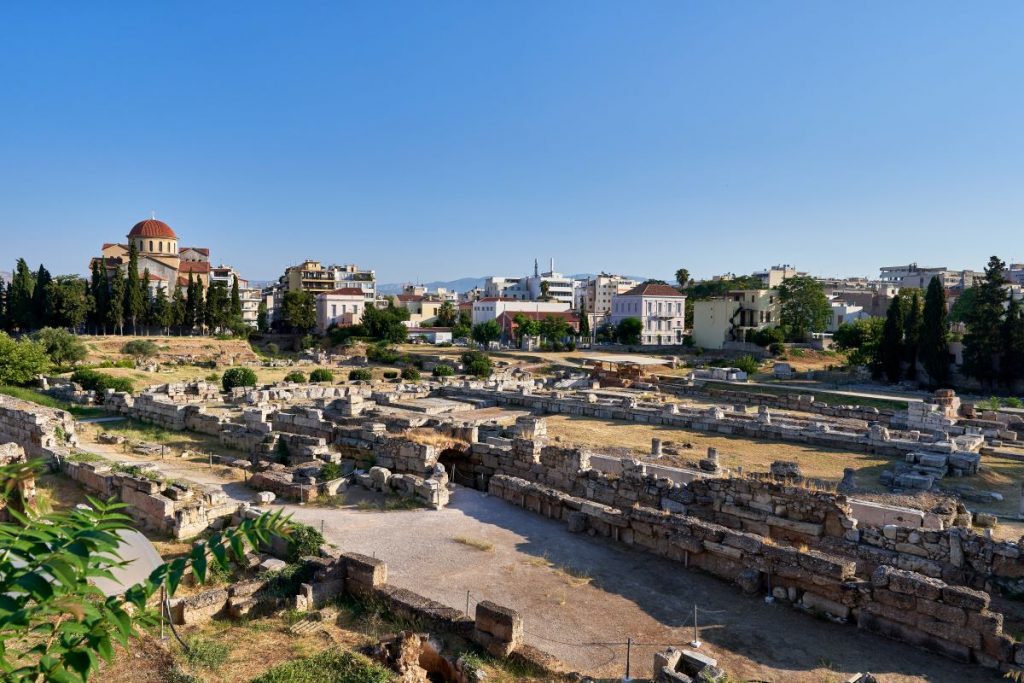
The remarkable history of Kerameikos
The history of the ancient cemetery of Kerameikos stretches way back. The earliest tombs in the area date from the Early Bronze Age (2700-2000 BC). But the area went under a massive change in the fifth century B.C. when Themistocles, a renowned general and politician, ordered the construction of walls around the city of Athens. These walls cleaved the area of Kerameikos in two.
The parts of Kerameikos inside of the city walls became a neighborhood where potters lived, and was a center of production for those distinctive Greek vases and amphoras. The artisans collected clay from the nearby Eridanus River, which ran through the center of Athens but in modern times has been almost completely built over. The name Kerameikos actually takes its root from the same place as the word “ceramics”.
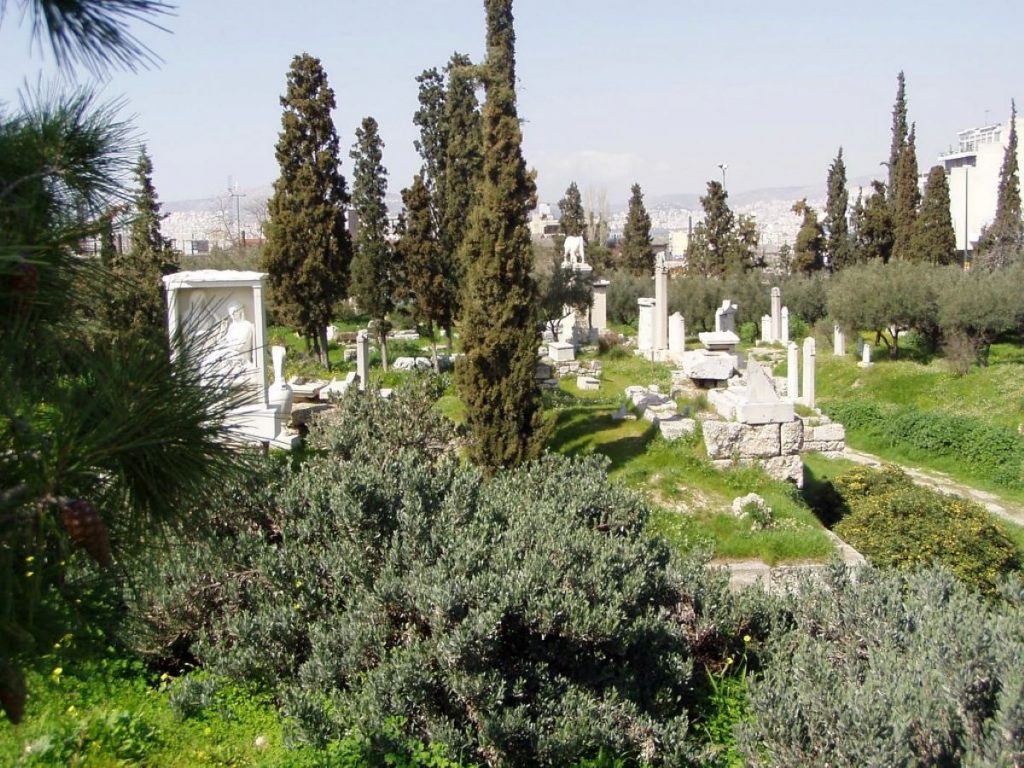
Importance of Kerameikos in ancient Athens
The area outside the wall was used as a cemetery. Tombs were placed in tumuli, or burial mounds, or marked with monuments. The cemetery was the final resting place for high priestesses, noble Athenian families, warriors who died in battle, and decorated athletes through the Classical period to the Early Christian period.
Today the archaeological site looks like a sprawling park scattered with impressive marble pieces. As you meander amongst the many cypress, olive, and laurel trees you can get up close with the famous funerary monuments in the same plots the ancients built them. Don’t be surprised if you also see tortoises sunning themselves on the ruins as well!
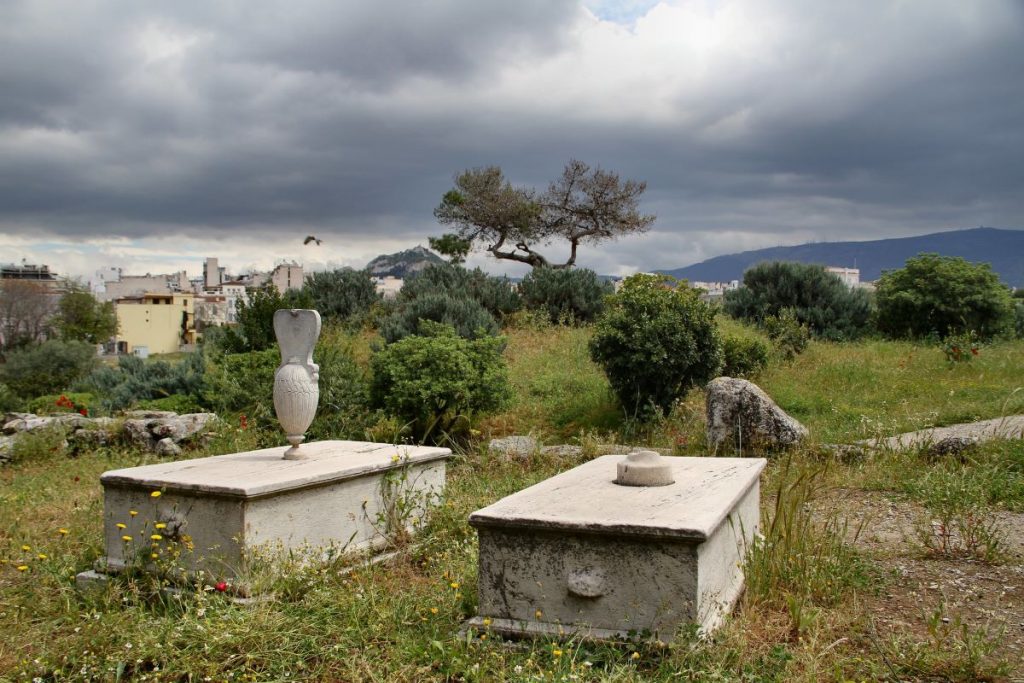
Insider’s tip: Want to see more artifacts and ruins in the city? Check out our guide to finding Greek ruins in Athens.
The Sacred Way and the Dipylon Gate
The walls Themistocles ordered built around the city of Athens opened at two monumental gates, remnants of which can both be seen inside the site of Kerameikos.
Where can you see the gates to the ancient city of Athens?
The Dipylon Gate was a behemoth formal Athenian gate. It served as the beginning of the ceremonial Panathenaic procession, which went along the Panathenaic Way to the Acropolis. Athenians stored important objects and prepared for the Panathenaic procession inside a building called the Pompeion. The building had a large courtyard encircled with columns, some of which you can still stroll around on your visit.
On one side of the Dipylon gate was a fountain, built between 307 and 304 BC that supplied water to Athenians and any thirsty visitors.
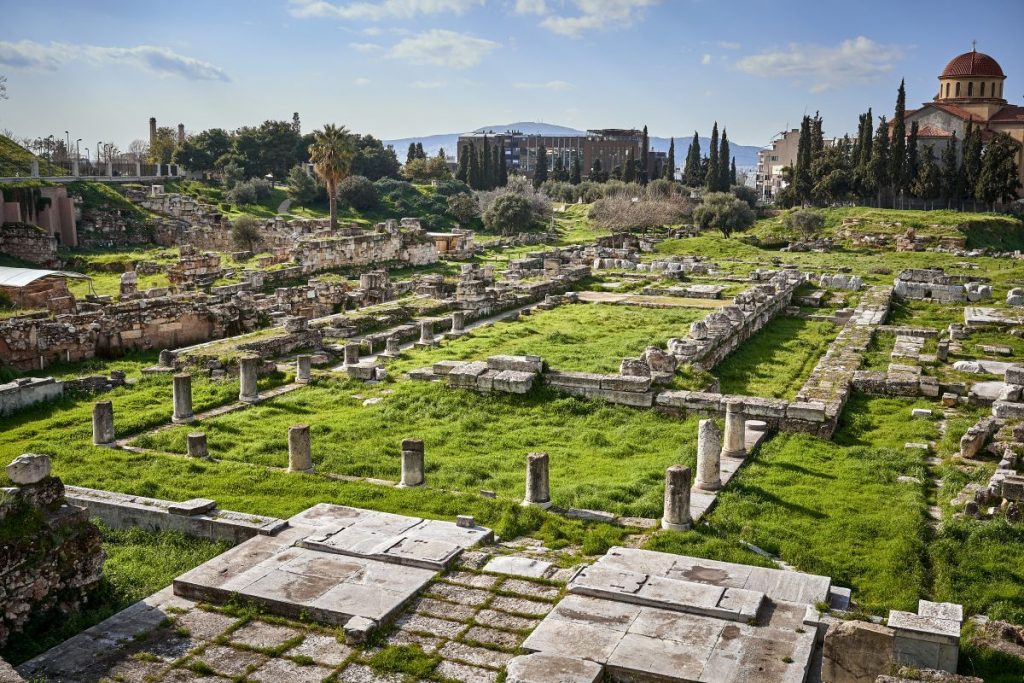
Ceremonial walk to the Sacred Gate
On the other side of the Diplylon gate was the Sacred Gate, which led east to the Sacred Way (Iera Odos). The Sacred gate was the starting point for the procession of the Eleusinian Mysteries. This procession was part of an intricate religious ritual carried out every fall which we still don’t know all the details of. But we do know participants began their day-long ceremonial walk to Eleusis from the Sacred Gate, carrying sacred objects and chanting along the way.
Between these two gates is the site where the ancient politician Pericles gave his famous Funeral Oration during the start of the Peloponnesian War around 431 BCE, to commemorate soldiers who had died in the battle. The speech (or a version of it) is recounted by the ancient historian Thucydides in his History of the Peloponnesian War, and has been the subject of dozens of classical paintings. We find there’s something transformational about being able to stand right in the spot where Pericles was, looking across the same Athens he spoke about over 2000 years ago!
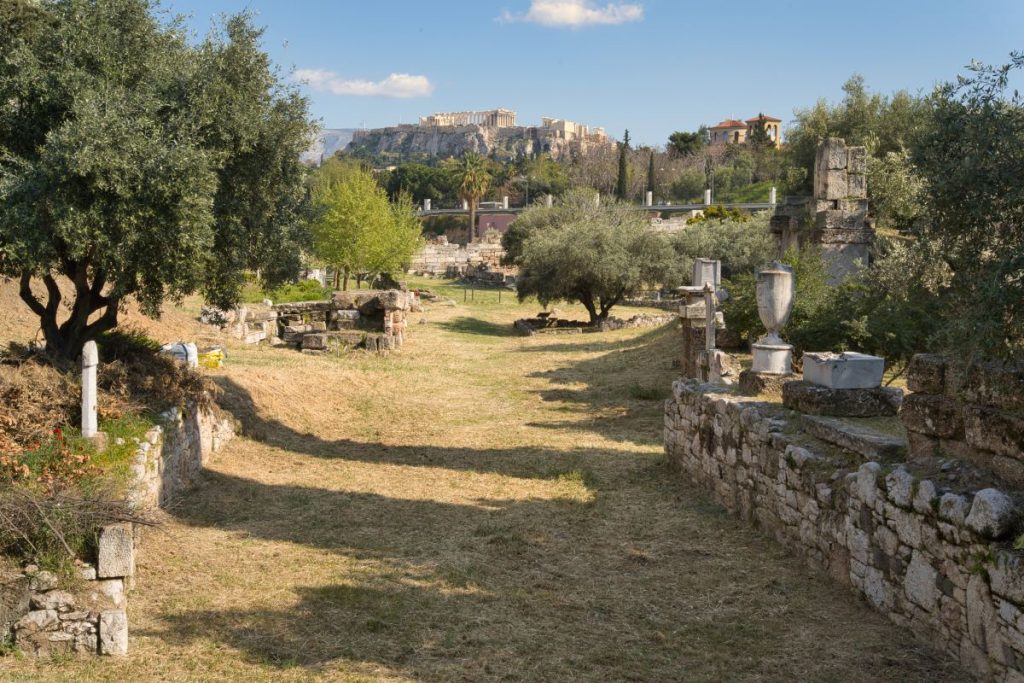
Excavations and Archaeological Discoveries
Systematic excavations in Kerameikos began in 1870 and continue today. Since 1913 the German Archaeological Institute has been in an exclusive partnership with Greece to study the site– this is why you will see many of the site markers are in German.
New discoveries at Kerameikos
In 2002, archaeologists made an especially impressive find in Kerameikos: a marble Kouros–a statue of a male youth–excavated near the Sacred Gate. The statue measures almost 7 feet in height, and has an intricate braided hairdo. Now in the Kerameikos museum, the Kouros is believed to have been crafted by the famous Dipylon Sculptor. It appears to be the twin of a lesser-preserved Kouros excavated from the same area in 1916.
No one expected such a rare find after 140 years of excavation in Kerameikos, but this 2002 Kouros was discovered along with some column pieces, a sphinx, and two lions, piled up under a river channel. It appears the ancient Greeks had used the marble artifacts to backfill road construction. We can’t deny the Kouros is in great shape, but the close observer can see faint marks from cart wheels across its surface.
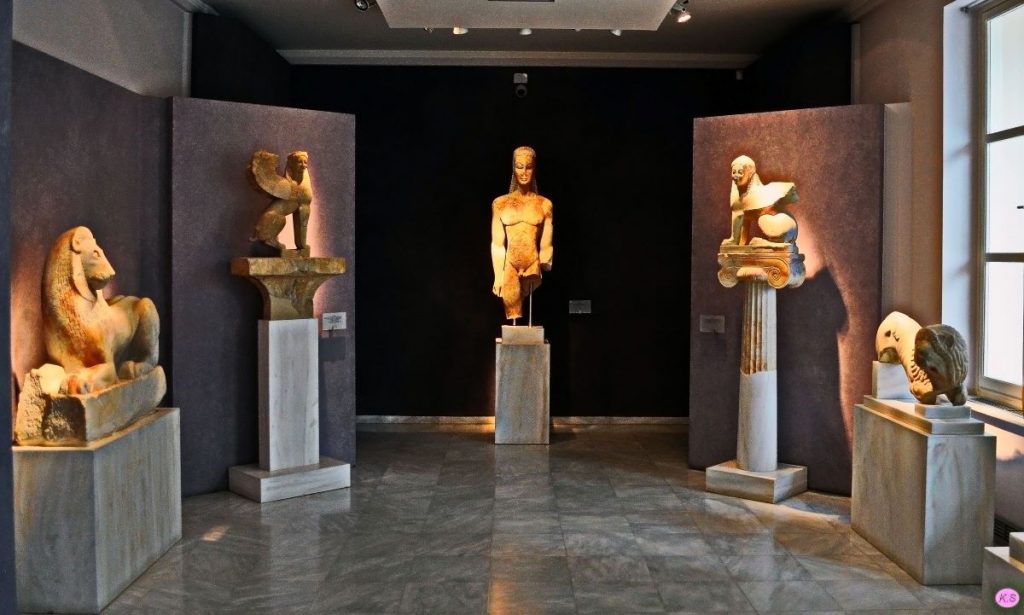
What is inside the Kerameikos Archaeological Museum?
The Kerameikos Archaeological Museum hosts the Kouros and many of the site’s other protected treasures. One of our favorites is a relief of the goddesses Demetria and Pamphile that seem to stare right back at you. There are also some fantastic ancient tombstones including a marble bull from the Precinct of Dionysios of Kollytos erected around 345 BC that looks about ready to charge off its pedestal, and the famed column of Igesos erected around 410 BC.
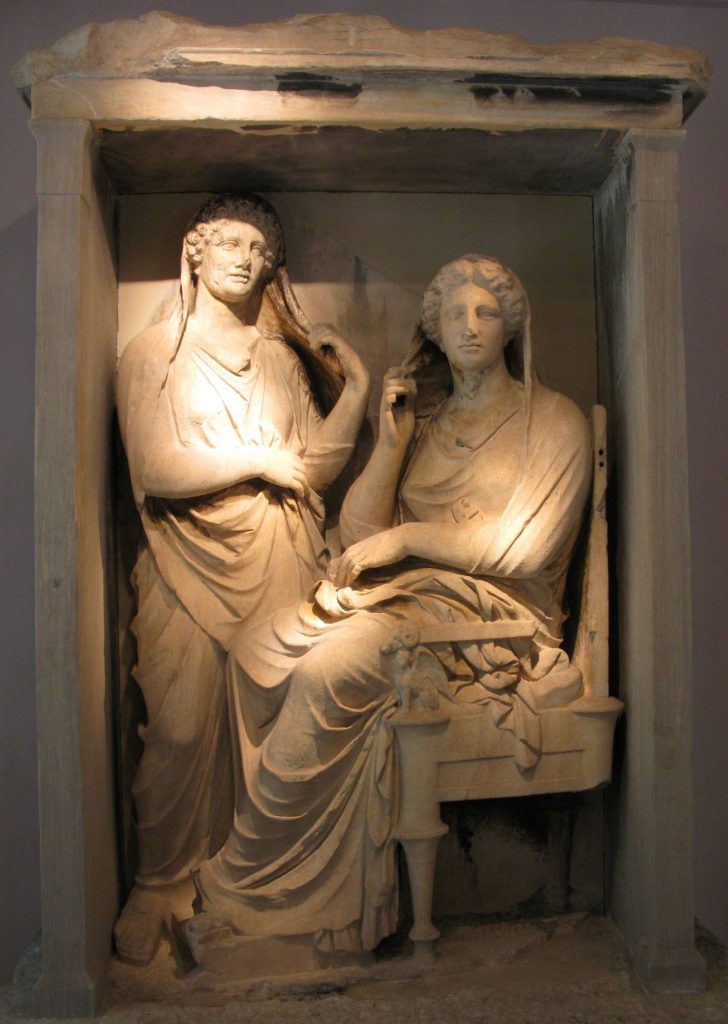
The museum was originally built in 1937, and the artifacts are exhibited in a loosely chronological order, and gathered with objects found in similar sites. We recommend going to the museum first, and the archaeological site after so you can picture the artifacts in the places they were discovered.
Traveler’s tip: Want to see more Greek artifacts that will blow your mind? The National Archaeological Museum of Athens is a must-visit when planning your Athens itinerary.
How to visit the Kerameikos Archaeological Site
Visitors can access both the archaeological site and the museum for a combined price of €8. Tickets can be bought online, or in person– we recommend buying at the site because there’s no worry of tickets to this insider attraction selling out.
We also recommend going earlier in the morning to avoid tour groups and to be able to meander through the sloping hills and funeral monuments at your own pace. Both the museum and the site are open from 8am to 5pm every day, aside from Tuesdays when the museum opens at 10am.
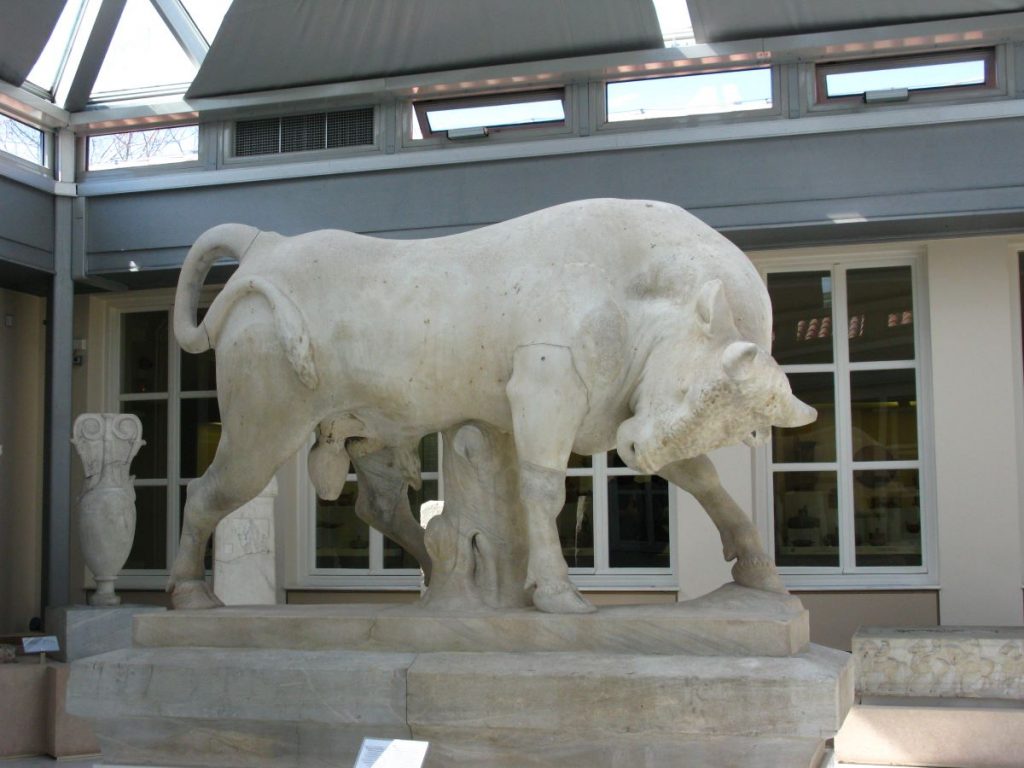
Why Kerameikos is a must-visit for history enthusiasts
Kerameikos is one of our don’t-miss destinations to learn about the lives and deaths of the ancient Athenians, away from the crowds and amongst the olive trees.
Want to see more of Athens? Check out our Ultimate Self-Guided Walking Tour of Athens to see the best of what this vibrant city has to offer.
